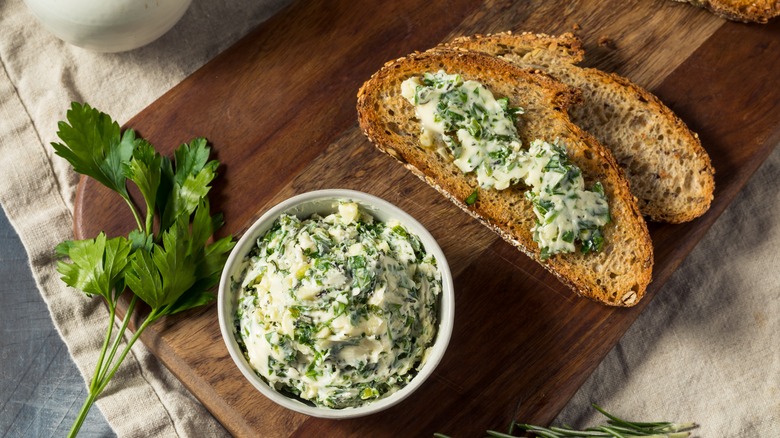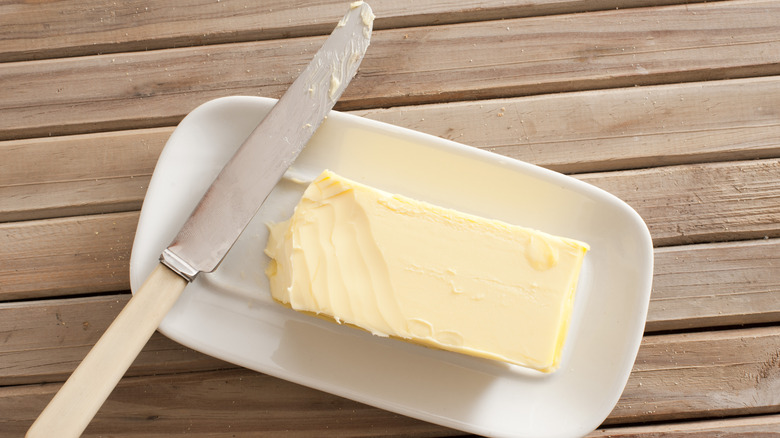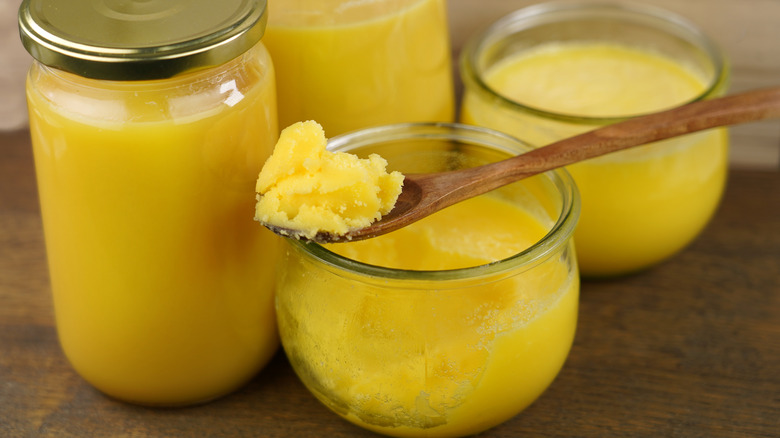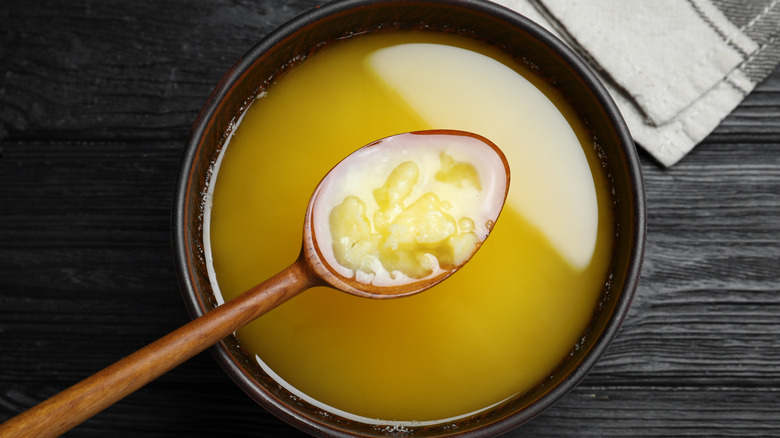This Country Produces The Most Butter Worldwide
We put it on everything: Slathered over warm morning toast, dolloped onto a hot pan for our eggs, folded into our pastries, blended into sugar for cookies, stirred into our roux, or as an added flavor for our steaks. Butter is there for us to use in many different ways. We love butter so much that the phrase "butter me up" has the positive connotation of flattery and praise because we associate butter with good things.
But what exactly is butter and why are we all so obsessed with it? The Dairy Council describes butter as the byproduct of agitating cream which becomes solid. Today, most butter is made by machine, where milk is heated and spun until a cream is formed and then churned into butter. The freshly made butter is then squeezed to remove excess buttermilk. At this point, salt or herbs can be added to the butter, and voila we have the little tubs and sticks you can buy at the store.
The History of butter
Butter is old ... Like, really old. According to Food Network, we can trace the origins of this dairy product all the way back to 8000 B.C.E. in Africa. For context, the Prehistoric era stretches roughly from roughly 8000 to 3000 B.C.E. This means that butter is quite literally a Prehistoric food (via History). It is believed by Elaine Khosrova, author of "Butter: A Rich History," that an African shepherd or hearer held sheep's milk in a container while traveling and jostled the milk so much that it curdled into butter.
But unlike today, butter wasn't commonly made from cow milk. Milky Day states that ancient butter makers primarily used milk from goats, sheep, and yaks because they were domesticated before the cow was. And though most of the world took to butter like a fish to water, one part of the world remained adverse to the fat: The Mediterranean. The countries lining the Mediterranean Sea, such as modern-day Greece, Italy, Turkey, and the multitude of islands located in this region, were rich in plant-based oils such as olive oil and seed oils. As a result, they had no need for butter-based fat (via ELI Edizioni).
India's butter obsession
Globally, we produce over 9,900,000 tons of butter a year, and India produces 3,797,550 of that, making it the largest butter producer in the world (via Atlas Big). The United States, which comes in second place, makes less than half that amount each year, with Pakistan coming in third. India has been making butter for over 3,000 years and has treated it reverently. Butter Journal details how the Hindu people used it heavily in their traditional cuisine and religiously offered it to Lord Krishna, a beloved Indian deity.
But it's not just any old butter made in India, it is called ghee. The Washington Post describes ghee as clarified butter, which is simply butter that is heated until all of the water evaporates, and the milk separates. This was done because India has tropical and subtropical climates, and heat spoils butter quickly. By clarifying the fat, it maintains a longer shelf life. Butter Through the Ages reports that in the Hindu culture, the cow is considered sacred, and therefore their butter is considered sacred. Many Hindus refuse to eat any other kind of fat except butter for this reason. Ghee was also considered extremely valuable because of its nutritional benefits. WebMD states that it has health benefits, including possibly helping reduce unhealthy cholesterol levels.
Butter and our bodies
Humans need to consume a certain amount of fat to live balanced and healthy lives. When humans were still roaming the earth as nomads, we craved fat because we needed it for our survival. Consuming fat makes us feel full and takes a long time for our body to process, making us feel fuller for longer (via Bulletproof). It is natural and, in fact, evolutionary for us to crave fatty foods, which is why we crave things like butter.
According to Healthline, butter is 80% fat and is one of the most complex dietary fats we can consume. In addition, dairy fats are considered healthy in moderation because butter is made up of over 400 fatty acids like Omega-3 which our body needs to survive, the dairy fat is also a source of life-sustaining vitamins. So next time you wonder whether to use a little butter in your dish, don't feel guilty if used in moderation with a healthy diet, that fat is chock full of good nutrients you need to thrive.



